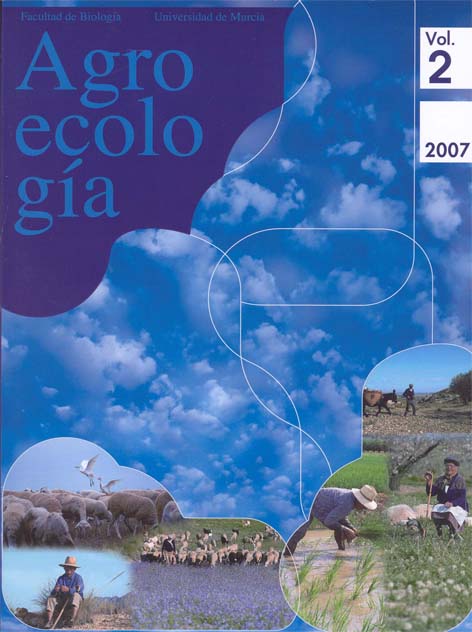EROSIÓN DEL SUELO EN PLANTACIONES DE CÍTRICOS EN LADERAS. VALLE DEL RIU CANYOLES, VALENCIA.
Resumen
Durante las últimas décadas el cultivo de cítricos en el Mediterráneo se ha trasladado desde las zonas bajas a las laderas en busca de un mayor confort térmico. Todo ello ha sido posible por la introducción del riego localizado, potenciado por la presión urbanística de las zonas llanas, y fomentado por la reducción de costes en los bombeos de aguas subterráneas. Las nuevas plantaciones ocupan ahora espacios de elevada pendiente donde las pérdidas de suelo suelen ser graves. A pesar del cambio en la localización de los cultivos -de llanuras a laderas- se siguen laboreando intensamente los suelos y/o aplicando herbicidas con el fi n de eliminar las malas hierbas. La agricultura de conservación y la agricultura ecológica pueden ayudar a detener las elevadas pérdidas de suelo. Experimentos con lluvia simulada (60 mm h-1) en campos de cítricos del valle de Montesa (Valencia) donde se han aplicado herbicidas (residual y sistémico), laboreo, cubiertas de paja y abono verde permiten cuantifi car tasas de erosión muy distintas según el manejo aplicado. La tasa de erosión en los campos donde se aplicó la cubierta de paja y el abono verde fue nula, mientras que el campo laboreado alcanzó los 10 g m-2 h-1, y en aquellos tratados con herbicidas la pérdida de suelo osciló entre 37 y 58 g m-2 h-1.Descargas
Las obras que se publican en esta revista están sujetas a los siguientes términos:
1. El Servicio de Publicaciones de la Universidad de Murcia (la editorial) conserva los derechos patrimoniales (copyright) de las obras publicadas, y favorece y permite la reutilización de las mismas bajo la licencia de uso indicada en el punto 2.
2. Las obras se publican en la edición electrónica de la revista bajo una licencia Creative Commons Reconocimiento-NoComercial-SinObraDerivada 3.0 España (texto legal). Se pueden copiar, usar, difundir, transmitir y exponer públicamente, siempre que: i) se cite la autoría y la fuente original de su publicación (revista, editorial y URL de la obra); ii) no se usen para fines comerciales; iii) se mencione la existencia y especificaciones de esta licencia de uso.
3. Condiciones de auto-archivo. Se permite y se anima a los autores a difundir electrónicamente las versiones pre-print (versión antes de ser evaluada) y/o post-print (versión evaluada y aceptada para su publicación) de sus obras antes de su publicación, ya que favorece su circulación y difusión más temprana y con ello un posible aumento en su citación y alcance entre la comunidad académica. Color RoMEO: verde.





